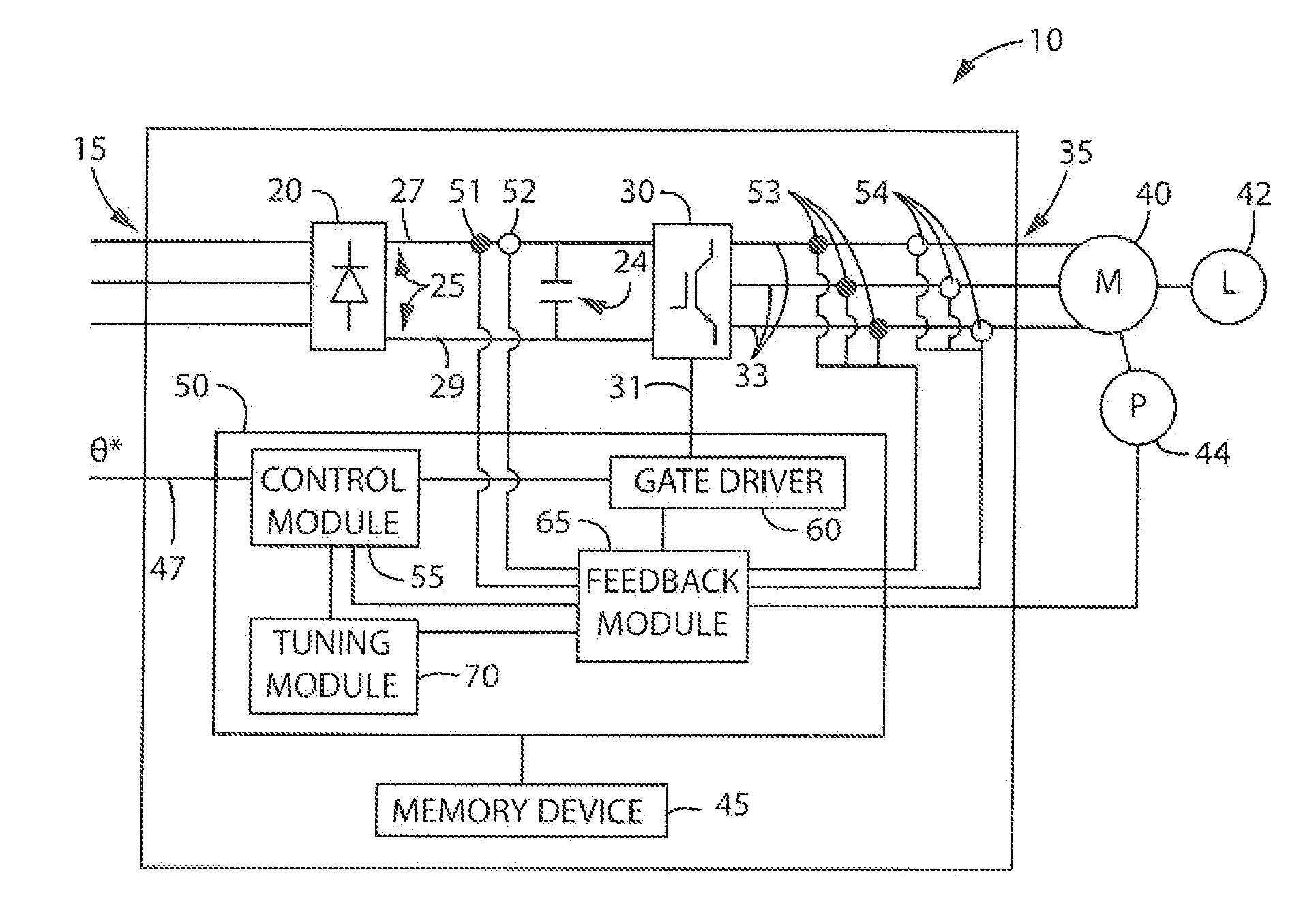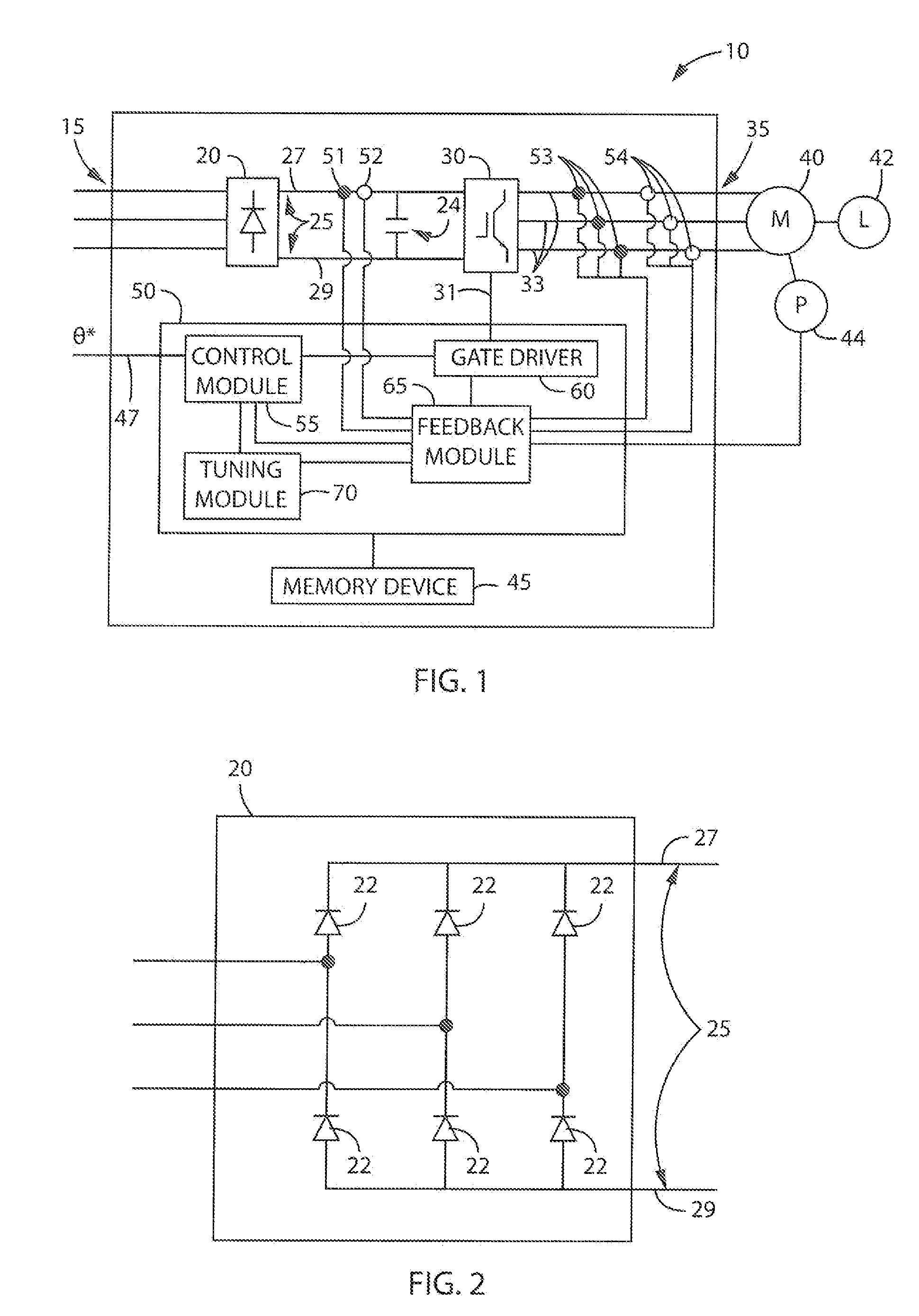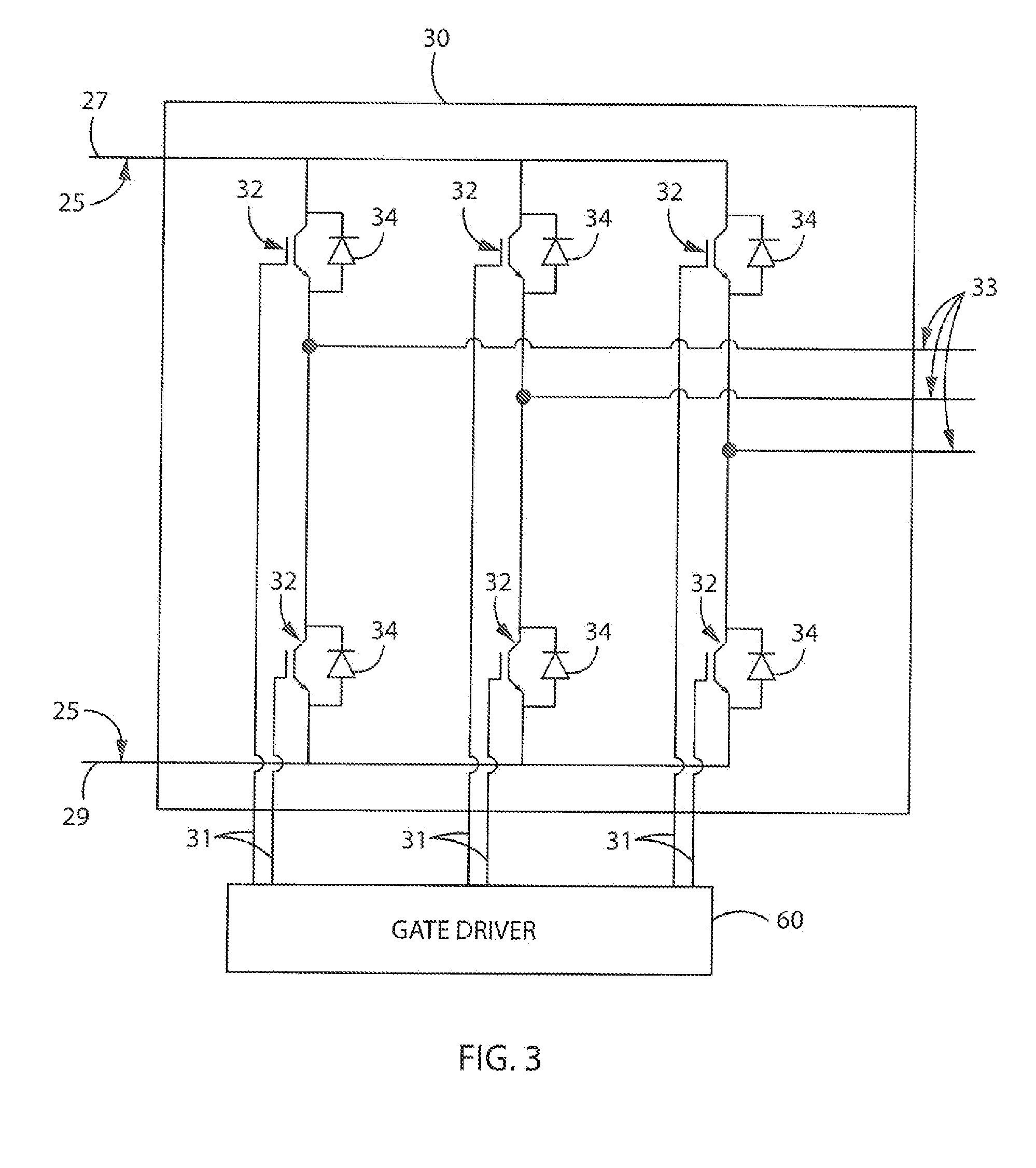Method For Tuning A Motor Drive Using Frequency Response
a frequency response and motor drive technology, applied in adaptive control, process and machine control, instruments, etc., can solve the problems of less than optimum performance, unstable control system, time and labor-intensive iterative approach, etc., to achieve the desired level of performance, reduce computational intensity, and rapidly determine the frequency response
- Summary
- Abstract
- Description
- Claims
- Application Information
AI Technical Summary
Benefits of technology
Problems solved by technology
Method used
Image
Examples
Embodiment Construction
[0031]Turning initially to FIG. 1, a motor drive 10, according to one embodiment of the invention, is configured to receive a three-phase AC voltage at an input 15 of the motor drive 10 which is, in turn, provided to a rectifier section 20 of the motor drive 10. The rectifier section 20 may include any electronic device suitable for passive or active rectification as is understood in the art. With reference also to FIG. 2, the illustrated rectifier section 20 includes a set of diodes 22 forming a diode bridge that rectifies the three-phase AC voltage to a DC voltage on the DC bus 25. Optionally, the rectifier section 20 may include other solid state devices including, but not limited to, thyristors, silicon controlled rectifiers (SCRs), or transistors to convert the input power 15 to a DC voltage for the DC bus 25. The DC voltage is present between a positive rail 27 and a negative rail 29 of the DC bus 25. A DC bus capacitor 24 is connected between the positive and negative rails, ...
PUM
 Login to View More
Login to View More Abstract
Description
Claims
Application Information
 Login to View More
Login to View More - R&D
- Intellectual Property
- Life Sciences
- Materials
- Tech Scout
- Unparalleled Data Quality
- Higher Quality Content
- 60% Fewer Hallucinations
Browse by: Latest US Patents, China's latest patents, Technical Efficacy Thesaurus, Application Domain, Technology Topic, Popular Technical Reports.
© 2025 PatSnap. All rights reserved.Legal|Privacy policy|Modern Slavery Act Transparency Statement|Sitemap|About US| Contact US: help@patsnap.com



